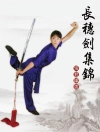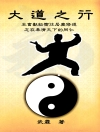Genuine Okinawan Karate was developed as a fighting tool.
Non-Okinawan Karate are for other purposes.
Karate practitioners, scholars, and everyone caring about Asian martial arts and its culture will enthusiastically appreciate this eye-opening work.
Dr. Bayer substantiates further how the art Karate was used to prepare a nation (Japan) for total war, how it was deliberately industrialized into a worldwide Japanized Karate-Do inflation, and how its following transformation into athletic showmanship destroyed the art’s unity and distinctiveness.
The author endorses Karate-Jutsu as a genuine Okinawan martial art even as foreign knowledge and skills from India (speculated) and from China (proven) were integrated― and he explains the imitative social mechanism used to turn this local fighting art into a symbol of national identity.
Since martial arts were initially understood as a moral code-neutral tool, like a weapon, this happens to contradict the modern understanding of Karate being a peaceful art with inherent non-violent values. In truth, moral codes or guidelines on how to use this tool were developed separately, not within the art.
A new “back to the roots” Karate-Jutsu movement gains importance and establishes a counterculture to Karate-Do’s industrialization, helping to integrate some neglected reminiscences of Karate-Jutsu back into Karate-Do. Such a development brings Japanized Karate-Do versions closer to their martial origins, whereas pure Karate-Jutsu will be preserved as a point of reference by a group of dedicated curators.
Contents include:
- Okinawa is the birthplace of Karate-Jutsu and Japan is the birthplace of Bu-Jutsu.
- How Karate and Budo were used for Japan’s war preparations.
- Senpai seniority was the social mechanism to integrate Karate into Japan’s martial arts tradition.
- Consequences of an ancient fighting art being turned into athletic showmanship.
- In Sports-Karate there is no more Kata in Kumite, and there is no more Kumite in Kata either.
- The modern misconception of avoiding a fight by all means.
- The path toward mastery in Karate.
- Sensei correct your errors and blunders, you have to correct mistakes yourself.
- Today’s Karate-Jutsu movement is the counterculture to Karate-Do’s industrialization.
- Karate’s market structure in the 21st century.
表中的内容
Introduction: Structure of the Text, Research, and Analysis
Content and Structure
Methods and Analysis Used
Quantitative and Qualitative Research Characteristics
Chapter I: Avoiding a Fundamental Misunderstanding: Why Different Terms Are Needed for Today’s Different Karate Variations
Classic Okinawan Karate Jutsu
Traditional Japanese Karate-Do
Modern Sports-Karate
Chapter II: Did Karate-Jutsu Originate in Okinawa or in China? A Contribution to Historic Reasoning in Martial Arts History
Throughout History Foreign Knowledge Is Integrated into Existing Ideas
China Is the Birthplace of Ch’üan fa,
Japan Is the Birthplace of Bu-Jutsu,
Okinawa Is the Birthplace of Karate-Jutsu
Is the Presented Reasoning Plausible?
Summary Chapter II
Chapter III: Japan’s Assertion of Okinawan Karate―How a Sub-Cultural Intangible Heritage Is Used as a National Cultural Symbol
Okinawa’s History Creates Unique Socio-Cultural Conditions
Assertion of a Sub-Cultural Symbol as a National Cultural Symbol
Summary Chapter III
Chapter IV: The Metamorphosis of an Ancient Fighting Art into Athletic Showmanship
Commercialization of Sports-Karate and Its Consequences
Summary Chapter IV
Chapter V: The Path to Mastery in Karate-Jutsu―Growing into Higher Levels of Understanding Karate-Jutsu
Three Core Components of Mastery
Milestones on a Path towards Mastery
“Inductive” vs. “Deductive” Learning Karate-Jutsu
Sensei Correct Errors and Blunders, Mistakes You Have to Correct Yourself
No More True Mastery in Today’s Changed World?
Summary Chapter V
Chapter VI: The Outlook―What Happens to Karate in the 21st Century?
‘Arts and Crafts Movement’ as Counterculture to Industrialization Offers a Historic Blueprint
Today’s Karate-Jutsu Movement Is the Counterculture to Karate-Do’s Industrialization
The Resulting New Market Structure
List of Abbreviations
Explanation of Asian Terms
List of Photos and Graphs
References
Index
Bibliographical Note
关于作者
Hermann Bayer, Ph.D. Degrees in economics, sociology, and psychology, Hermann has worked in academia (scientist and campus dean) and as a CEO in the private sector (Germany). He immigrated to the USA in 2005. Hermann’s karate training began in Europe (1981) with Japanese karate-do until he transitioned to Okinawan karate in the USA (2016). He has spent considerable time with renown Japanese, Western, and Okinawan karate teachers, all the while researching the core essence of the style they represent. Hermann Bayer resides in Virginia Beach, VA.












